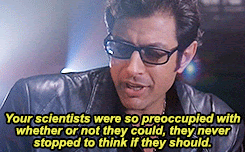How to improve your Customer Experience 2023
Short answer: Yes, and it’s partly your fault. But you’re also the one who can make it better.
We’re optimizing our customers to death. We’re so focused on sales and marketing optimization that we’ve lost sight of what we’re here for – finding and satisfying customers. We’ve moved well past optimization to downright annoying.
TrustRadius’ 2021 B2B Buying Disconnect report states that “there’s a big disconnect between the resources buyers rely on and tactics vendors use.” For example, buyers report disliking common sales and marketing tactics like chatbots, cold calls, and non-personalized messages.
This isn’t surprising, of course. If you’re reading this, you probably work in sales or marketing and spend a lot of time trying to find the right tactics that best connect you with buyers. But you’ve also probably been in the buyer’s seat of another vendor’s product and are well aware of all the annoying things some vendors (never any of us, of course) do to get you just to buy something already.
So, the big question is – how much are we really annoying our prospects and customers? And can we better reach customers without being (so) annoying? How can we optimize without annoying?
And I’d like to be clear that I’m not just talking about marketing or sales. This is directed to everyone across the revenue organization, anyone who directly or indirectly interacts with customers at every step of the buyer journey. That includes marketing and sales, of course, but it also includes customer success and service, even product development. All of us are responsible for this problem, which means each of us can help make it better.
The optimization to annoyance progression
When I say that we’re way-over-optimizing our customers, what does that mean exactly? What are we optimizing, and why?
Ultimately, every business is trying to grow. We want more customers. And not just larger quantities (more customers), but also higher quality (better customers). Customers who:
- Stick around longer.
- Spend more money.
- Use the product more.
- Spread the word to others.
- Get value from the product.
- Need less help.
So we’re optimizing everything we can in our acquisition, retention, and expansion processes. How can we better attract the right customers? How can we more quickly answer customer questions? How can we close more/larger/faster deals? How can we generate more revenue with fewer resources?
Over the past two decades, sales and marketing technology has transformed how we do our jobs. We have software for everything, data at every step of the way, and entire teams dedicated to making these processes work better (hi revops!).
Our entire sales process is data-driven, so we can – and do – test everything. Everything on our website, every step in our outreach, every email technique, every demo, every handoff.
Further, we can automate almost everything. From chatbots to nurture sequences to in-app upsells, we can provide the right interaction at the right time for every prospect, using technology to make more room for people to do higher-value activities.
But should we? We were so busy saying we could; we didn’t stop to ask if we should.

Small adjustments to our processes at any stage in the buyer journey can impact acquisition and retention in huge ways. So it makes sense to test and automate everything we can because if we do enough, we’ll eventually close/keep/grow that account. Right? RIGHT?!?
We tell ourselves that. But what are all these adjustments actually doing to our customers?
The typical B2B SaaS customer experience
Let’s take a hypothetical trip through a typical B2B customer experience as a prospect moves through the buyer funnel from awareness to purchase.
Awareness
Company X schedules and promotes a webinar. Alice sees a retweet about the webinar from a friend, so she clicks through to check out the webinar registration page. A few seconds after she lands on the page, the company’s privacy consent form slides onto the page. A few seconds after that, a chatbot pops up to ask if she needs any help.
Alice decides to register for the webinar. She gets an email confirmation of her registration right away, then a reminder email two days before the webinar, and another email reminder an hour before the webinar begins.
The day after the webinar, Alice receives an email from the marketing team with a recording of the webinar. The email refers to Alice by name and sent from a person on the marketing team to make it seem more personal, even though Alice is well aware that she’s receiving a mass email with a few personalization tokens.
The day after that, Alice’s phone rings and the call is from a number she doesn’t recognize. She doesn’t answer it, and the caller doesn’t leave a voicemail.
The next day, Alice gets a LinkedIn connection request from a salesperson at Company X, “I saw your profile and thought it would be relevant to connect. I hope you enjoyed our webinar!” Alice declines the invitation since she doesn’t know this person.
A few days after that, Alice’s phone rings again, and this time she answers the call. It’s a BDR from Company X, who wants to know what brought Alice to the webinar. The product the company sells could be a fit for a need at Alice’s own company, so she agrees to a 30-minute call to discuss.
Consideration
The BDR sets a meeting with an account executive at Company X. Before the meeting, Alice visits Company X’s website to review some of the product information and look for pricing. The chatbot bugs her a few more times, and she closes a pop-up banner asking her to download an ebook.
Alice meets with the AE to learn about Company X’s product. She asks for pricing, but the AE says they’d need to customize a package for her needs before talking about pricing.
So they schedule a second meeting for a customized demo. After that demo, they discuss pricing. Alice isn’t sure if she has budget for the total cost, so she asks for more time to discuss with her team.
Decision
Seven emails, two voicemails, and a few weeks later, Alice replies to the AE saying she’s ready to move forward. The quoted sales price is a bit more than she’s approved to spend, so she asks for a discount. The AE connects Alice to their manager, who approves a 10% reduction in price. Once they agree on the price, Alice has to work through some contact redlines with Company X’s legal team.
Then she signs the contract! Alice is now a customer, so she is introduced to the onboarding team. Alice will have a dedicated onboarding contact for the first 30 days as a new customer, and then she’ll be transitioned to her permanent account manager.
Adoption
After a month of onboarding, Alice is handed over to her AM. They have a brief intro call.
Alice has a question a couple of months into her contract, so she logs into her account. A friendly chatbot pops up, asking if she needs help. She types in her question, goes back and forth unsuccessfully with the chatbot AI for a minute before she’s connected to a customer service representative (a real person!), who helps solve her issue.
The next day, she gets an email from her account manager: “Hi Alice, I noticed you were exploring a new feature in your account. Would you be interested in discussing an upgrade to get more of that?” Alice declines for now.
A few months later, Alice gets an email from a new account manager. “Hi Alice, we haven’t met yet, but I’m going to be managing your account now. Please let me know if you want to discuss your account.” Alice doesn’t reply.
She also receives monthly newsletters from the marketing team and periodic product update notifications. Sometimes she reads these emails, sometimes just archives and ignores.
Retention
Ninety days before renewal, Alice gets a call from her new AM. And a few emails. And another call. Alice finally replies, and they discuss a possible upgrade to accompany her renewal.
After some back and forth, Alice’s account is renewed and upgraded. She’s now spending enough money to be considered a key account, so she’s connected to a dedicated CSM and a new AM with expertise with larger accounts.
At this point, Alice has had a relationship with Company X for about 18 months. She has interacted with the company dozens of times and with at least ten different people (more if you count the chatbots). And she’ll probably interact with lots more people over the lifetime of her account.
And this experience hasn’t been particularly complex. It hasn’t resulted from too much Company X employee turnover or a truly bad sales experience. Alice hasn’t been a difficult customer. This is just a typical customer experience.
It’s also a very messy customer experience. There’s so much room for error and frustration, and confusion. But there’s also so much room for improvement.
And this is why your customer experience is annoying
What I just described is an annoying customer experience. But it’s not uncommon; it’s what we’ve come to expect from every B2B SaaS company’s website. Because we all do it. I’ve done it, and you’ve done it. We market to them until they tell us to stop.
We’re annoying everyone who interacts with us.
I’ve been a little unkind to chatbots. I don’t hate chatbots – when they’re implemented thoughtfully and aligned with overall sales goals, they can work well. They’re especially useful to provide an immediate response to a prospect or customer with a question.
But they represent a bigger issue – the badger.

“Hey, just checking in! Have you had a chance to look at this?”
“Can we connect this week?”
“Would you be open to a quick call?”
“Read this to learn more.”
“I am happy to answer questions if you have them!”
I could have used a dozen other examples, like nurture emails after a demo request, sales outreach tactics, or in-product upsell messages. The list goes on. And at every step of the customer lifecycle, we’re doing this.
We’re badgers, bothering a customer until they finally relent.
This isn’t just a sales or marketing problem, either. All of us are responsible for the customer experience. That includes marketing, new business, retention and expansion, support, product.
I’ve noted before that we find ourselves in this mess because of a lack of alignment in the revenue org. We might say we’re better aligned than ever before, but we’re not. Every department has its own objectives, and we often have conflicting methods to achieve them. And our customers are the ones who end up dealing with the mess we make.
We have a hundred different CTAs on our website because a dozen different stakeholders have three dozen different goals: request a demo, download a whitepaper, contact support, sign up for a webinar, follow us on LinkedIn, listen to our podcast, learn more about our new product, read this press release, be impressed by this testimonial.
We all have to work better together because we’re all working toward the same goal: more and happier customers.
How much do you know about your company’s customer experience?
When was the last time you visited your company’s website as a customer would? Try to see it as a layperson – figure out what your company sells and how much it costs, find contact information, learn something from the blog, download a resource.
I bet that – no matter where you sit in the GTM organization – you’ll be surprised at how disjointed and annoying the experience is.
Everything is huge. There are a hundred things to click on. Multiple CTAs compete for your attention. Some of them even wiggle or flash. None of the words actually mean anything. And forget trying to figure out how much the product costs if you can even tell what your company sells. (Is it insights? It’s usually insights.)
We tell them over and over and over to JUST CLICK ON THIS PLEASE.
Okay, but is this a problem? If it eventually gets someone to click or sit in on a demo, it’s working, right? Maybe. But it’s not a great customer experience, because:
- It’s annoying. Do not annoy a potential customer. Stop.
- It’s interruptive. It gets in the way of the reasons someone interacts with you in the first place.
- It’s ineffective. Eventually, if we give someone enough things to click on, they’re going to click on something. It doesn’t mean they’re actually interested, just that they’re tired.
What can you do to make this better?
First, optimization itself is not bad. In fact, optimization is essential – we need continuous improvement to grow. But we need to step back and look at the full customer experience as the system it is and think about our individual roles in that system.
This isn’t about specific outreach sequences or how to format your LinkedIn connection requests. It’s not about the best copy to put in your chatbots. It’s more about the holistic philosophy that leads to these hundreds of individual decisions and their impact on your customer’s overall experience.
One annoying chatbot isn’t that big a deal. A couple of un-personalized emails, not a huge problem. A few unanswered calls, fine. But when you put those together, you end up with too much, too annoying.

The customer experience should be:
- Consistent
- Simple
- Easy
- Invisible
That means from the moment someone encounters your company; they’re not annoyed. They should be informed, engaged, delighted. And that should be true at every step of the way – from marketing to new business to customer retention to customer service, and at every stop in between.
Whether you run an entire department or you’re on the front lines talking to prospects, there’s a lot you can do to make this better. Start by following a few simple rules for effective communication.
- Be direct
- Be specific
- Be relevant
- Be timely
- Use real words
- Don’t overhype
- Don’t overcomplicate
- Stop bugging people so much
- Add value
These should be the golden rules we all live by. We all want to personalize our customer’s experience. We want to optimize every step of that journey. These are the right goals, and we shouldn’t lose sight of them. But it’s time we took a step back to look at how we’re achieving them.
You’ve probably heard that it takes somewhere between 7 and 35 touches to get a response. That doesn’t mean you should just keep emailing and calling and putting CTAs in front of someone to spur them into action. At some point, you’re going to annoy them into replying, but that’s not the kind of reply you want.
Instead of thinking just about intelligent optimization or data-driven optimization, I want you to also think about compassionate optimization. Look for positive and negative signals to inform your outreach strategy. Think about the people on the receiving end of your tactics. It’s up to you to stop annoying your customers.